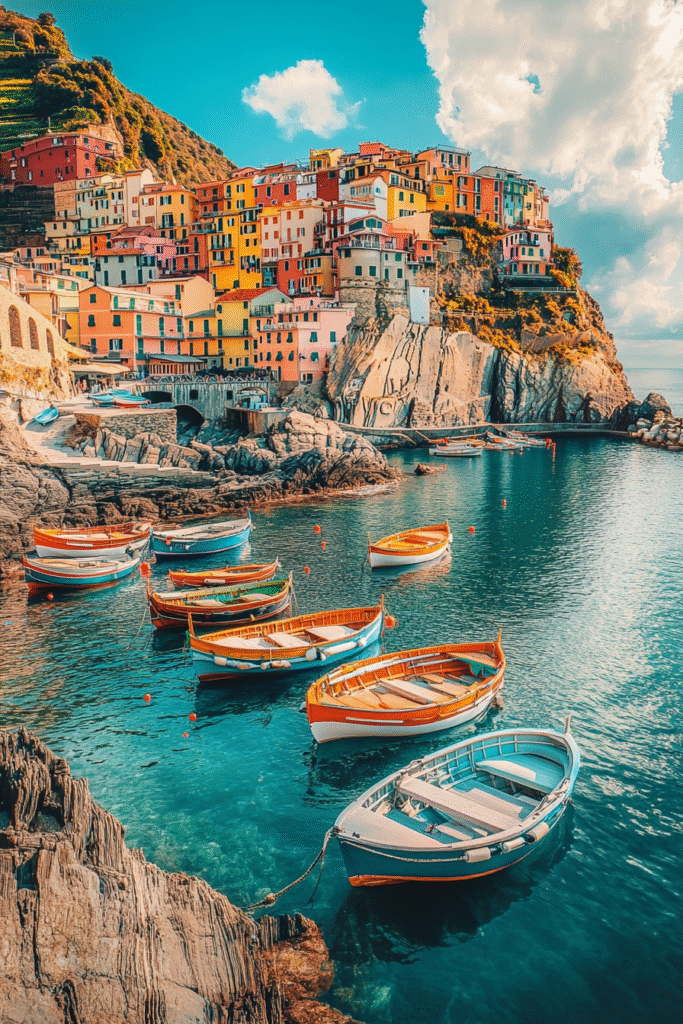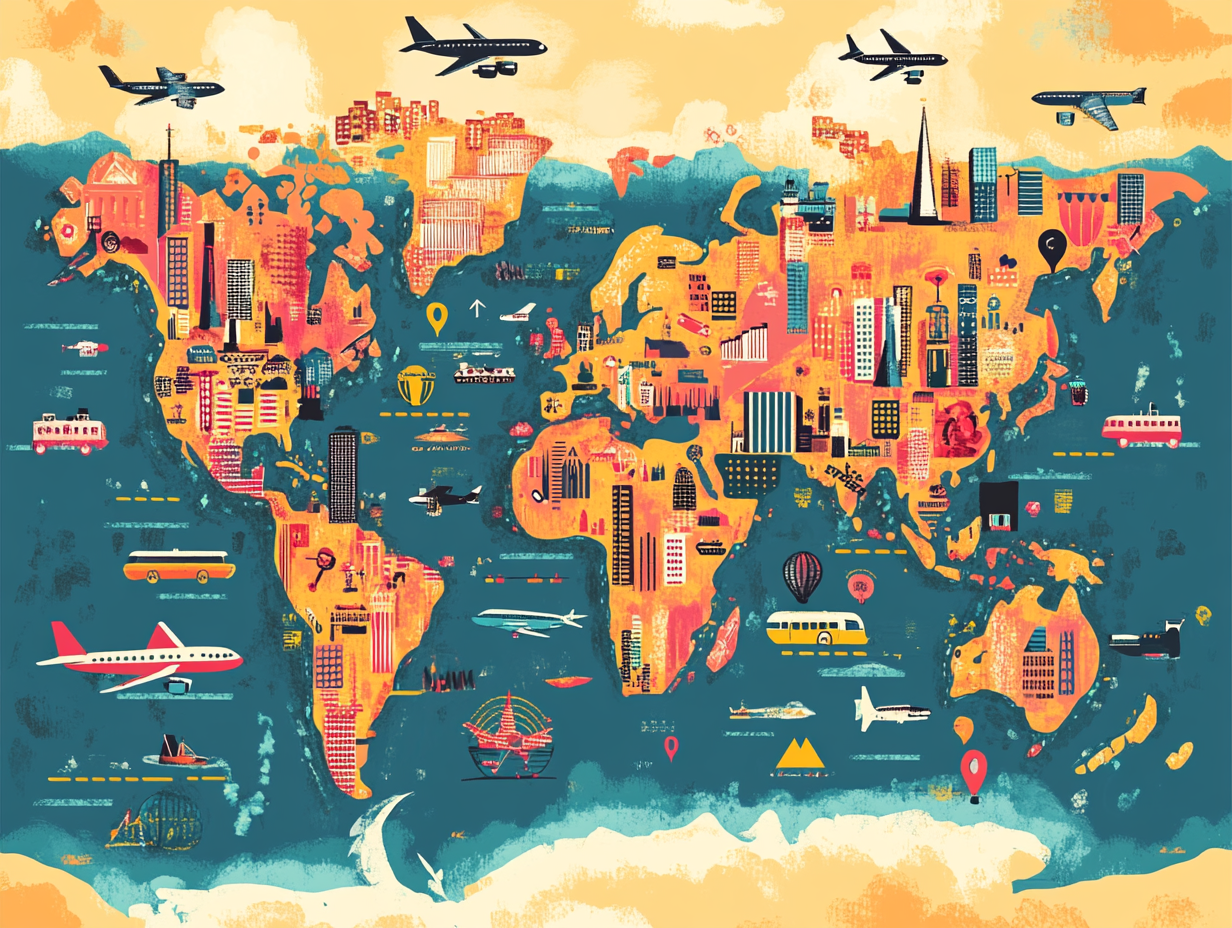Dreaming of La Dolce Vita? You’re not alone. Thousands of Americans are making the move to Italy in 2025, whether for retirement, remote work, family, or simply a change of pace. With its rich culture, breathtaking landscapes, and slower-paced lifestyle, Italy continues to be one of the top destinations for U.S. citizens looking to relocate.
But how do you actually move to Italy from the USA? This guide covers everything—from visa options and living costs to cities, housing, healthcare, and legal tips.
🇮🇹 Why Move to Italy?
- History and culture on every corner
- World-class healthcare at affordable rates
- Slower pace of life and better work-life balance
- Delicious food and wine
- Lower cost of living (in many areas compared to major U.S. cities)
- Excellent public transportation
✈️ Visas and Residency for Americans

Americans can stay in Italy (and any Schengen country) for up to 90 days without a visa. But for long-term stays, you need a visa and residency permit.
🛂 Common Long-Term Visa Types:
1. Elective Residency Visa (Retirees & financially independent individuals)
- Requirements: Proof of sufficient income (approx. €31,000/year for individuals), private health insurance, accommodation
- No work allowed
- Ideal for retirees or people living off investments/pensions
2. Work Visa
- Requires a job offer and employer sponsorship
- Often limited due to quotas and bureaucratic challenges
3. Self-Employment Visa
- For freelancers, entrepreneurs, or digital nomads
- You’ll need a business plan, proof of income, and local registration
- Requires patience—this visa is competitive and regulated
4. Student Visa
- Enroll in an accredited Italian university or language program
- Allows part-time work (20 hrs/week)
5. Family Reunification Visa
- For those joining a spouse or family member with legal residency in Italy

🏠 Where to Live in Italy
💼 Best for Professionals/Digital Nomads:
- Milan – Business hub, modern lifestyle, fast internet
- Rome – Mix of history and cosmopolitan life
💰 Best for Affordability:
- Lecce (Puglia) – Sunny, relaxed, and much cheaper than big cities
- Palermo (Sicily) – Historic charm with low rent
- Abruzzo Region – Small towns, beautiful nature, low costs
🧓 Best for Retirees:
- Lucca (Tuscany) – Peaceful, elegant, walkable
- Lake Garda – Gorgeous lakeside living
- Umbria – Countryside with authentic Italian charm
🌊 Best Coastal Living:
- Amalfi Coast (expensive but stunning)
- Sardinia – Laid-back island lifestyle
- Liguria (Cinque Terre area) – Ideal for sea lovers
💸 Cost of Living in Italy vs USA (2025)
| Expense | Rome | Milan | Florence | Small Towns |
|---|---|---|---|---|
| 1-Bedroom Rent (City Center) | €1,200 ($1,300) | €1,300 ($1,400) | €1,000 ($1,100) | €450–€700 ($500–$770) |
| Utilities (Electric, Water) | €150 | €160 | €140 | €100 |
| Internet | €30 | €30 | €30 | €30 |
| Groceries (monthly) | €250–€400 | €300–€450 | €250–€400 | €200–€300 |
| Dining Out (mid-range) | €40 for two | €50 | €35 | €25 |
| Public Transport (monthly) | €35 | €39 | €30 | €20 |
👉 Tip: You can live comfortably in small towns with €1,500–€2,000/month. Big cities may require €2,500–€3,500/month.
🏥 Healthcare in Italy
Italy has one of the best public healthcare systems in Europe.
- SSN (Servizio Sanitario Nazionale): Public system, very affordable or free once you’re registered as a resident
- Private insurance: Required for visa applications; many expats keep private coverage for convenience
- Costs:
- Doctor visit: €20–€80
- ER visit (non-emergency): €25
- Dental cleaning: €50–€90
🏫 Language and Integration
- Language: Italian is the official language. English is common in tourist areas but limited elsewhere.
- Language schools: Intensive Italian courses cost around €600–€1,200 for 4–8 weeks
- Integration tip: Learn Italian basics early! It makes daily life much easier and helps you connect with locals.

📑 Bureaucracy and Legal Steps
- Get your visa at the Italian consulate in the U.S.
- Enter Italy with that visa and apply for a Permesso di Soggiorno (residency permit) within 8 days
- Register with the local Comune (municipality)
- Apply for a Codice Fiscale (tax ID) – needed for renting, opening bank accounts, etc.
- Choose healthcare (SSN or private)
🏦 Banking and Money
- Open an Italian bank account (you’ll need your residency and Codice Fiscale)
- ATMs are widely available
- Wise or Revolut are great options for international transfers
- Avoid carrying too much cash—cards are accepted almost everywhere
🚗 Transportation and Driving
- Public transport: Reliable in cities; rural areas may require a car
- Driving in Italy: U.S. license + International Driving Permit (IDP) valid for 1 year. After that, you must convert your license if eligible.
- Trains: High-speed trains (Frecciarossa, Italo) connect major cities—fast, scenic, and affordable
📦 Shipping and Moving Services
- Moving services from the U.S. to Italy can cost $3,000 to $8,000, depending on volume and method (air vs sea)
- Consider selling most items and starting fresh
- Bring personal documents, favorite electronics, and essentials
- Amazon.it and IKEA are your new best friends

💡 Tips for a Smooth Move
- Join expat groups online (Facebook: Expats in Italy, Americans in Rome, etc.)
- Rent before you buy—get to know the area
- Use relocation consultants or visa lawyers for smoother paperwork
- Don’t expect U.S.-style customer service—patience is key!
- Embrace the cultural differences. That’s part of the adventure!
🌟 Final Thoughts
Moving to Italy from the U.S. is a big step—but one full of reward. If you’re seeking a slower lifestyle, rich culture, lower living costs, and a beautiful setting, Italy might just be your next home.
With proper planning, realistic expectations, and an open heart, you can begin your Italian chapter with confidence.
Benvenuti in Italia! 🇮🇹
